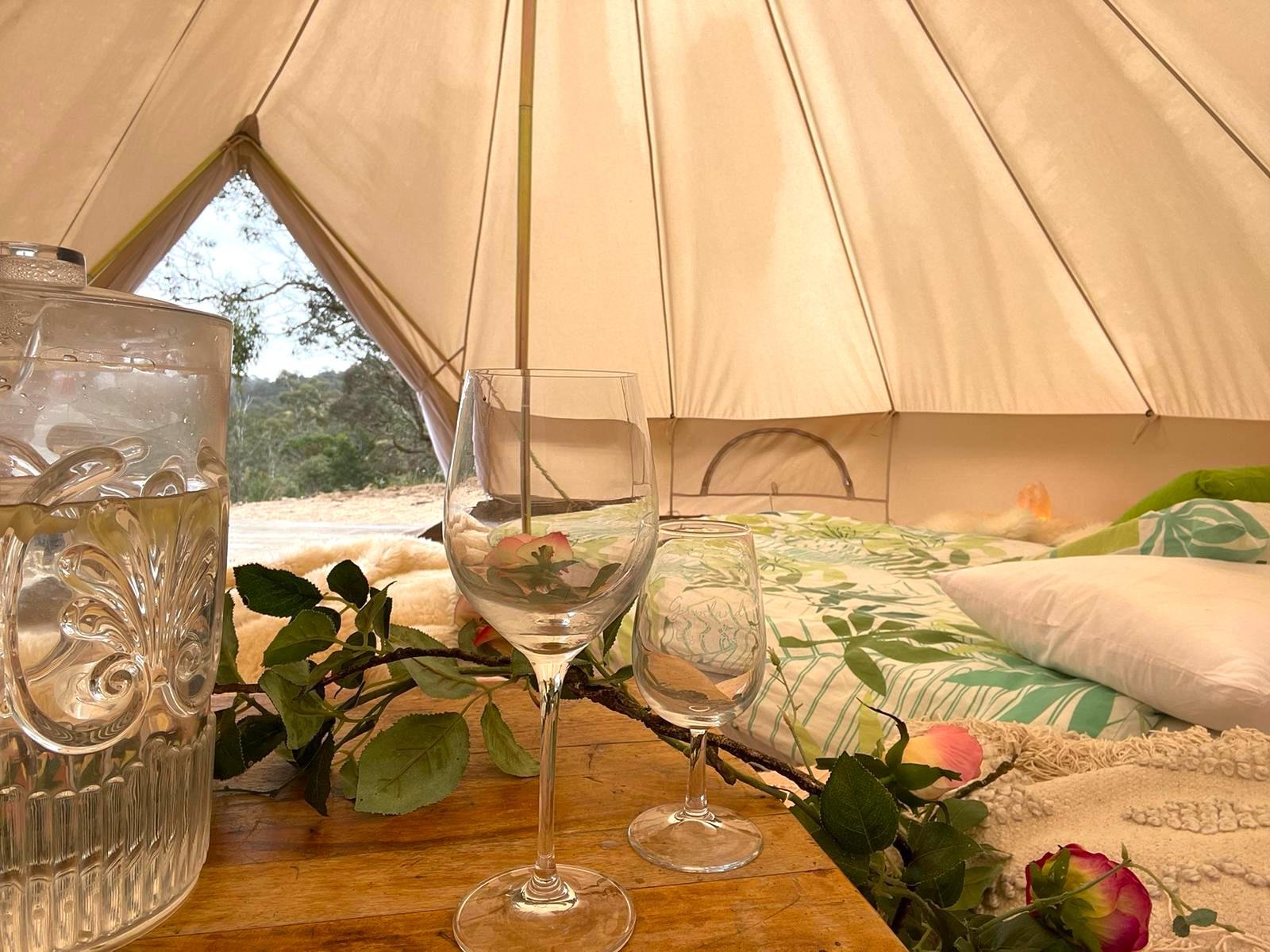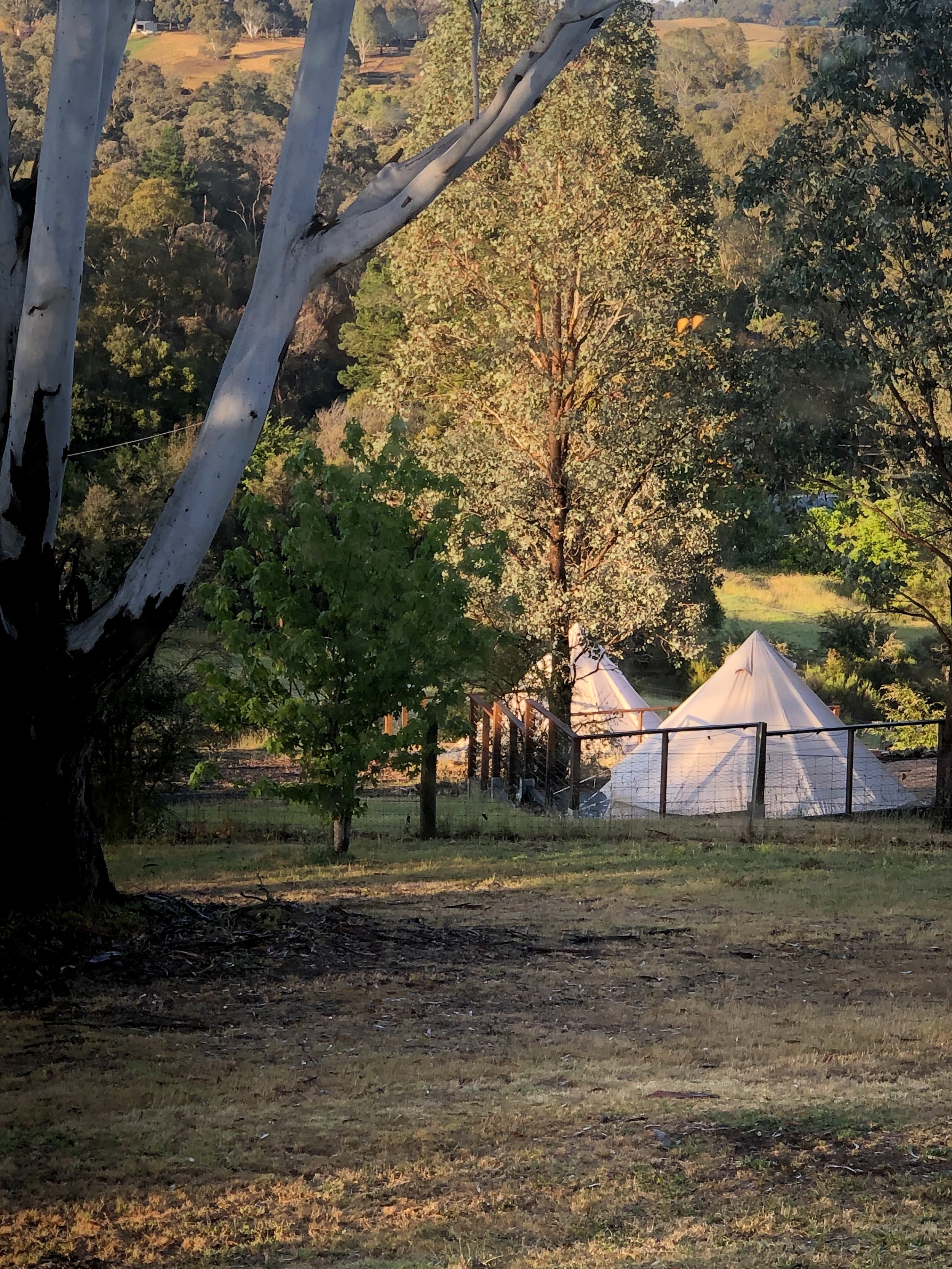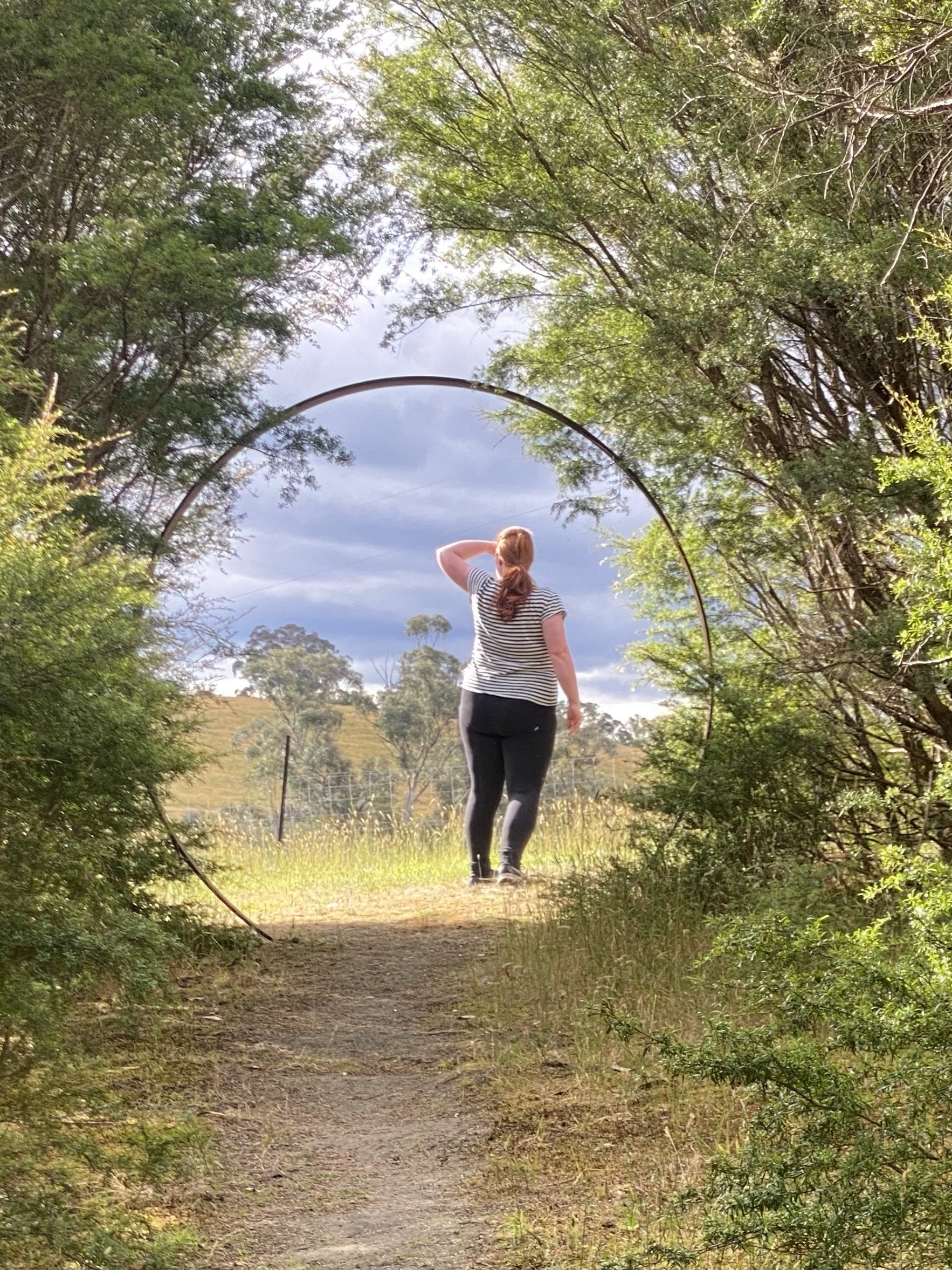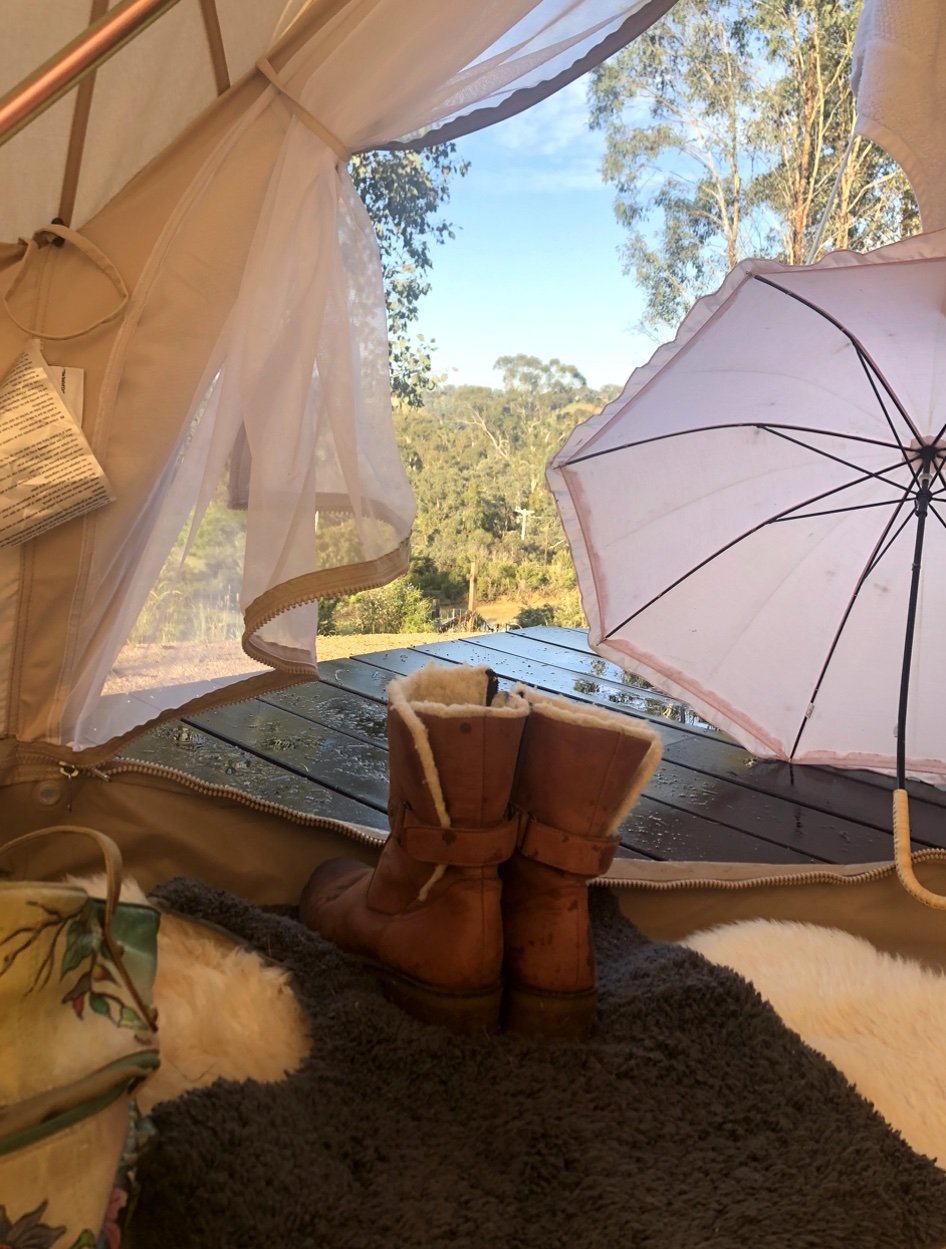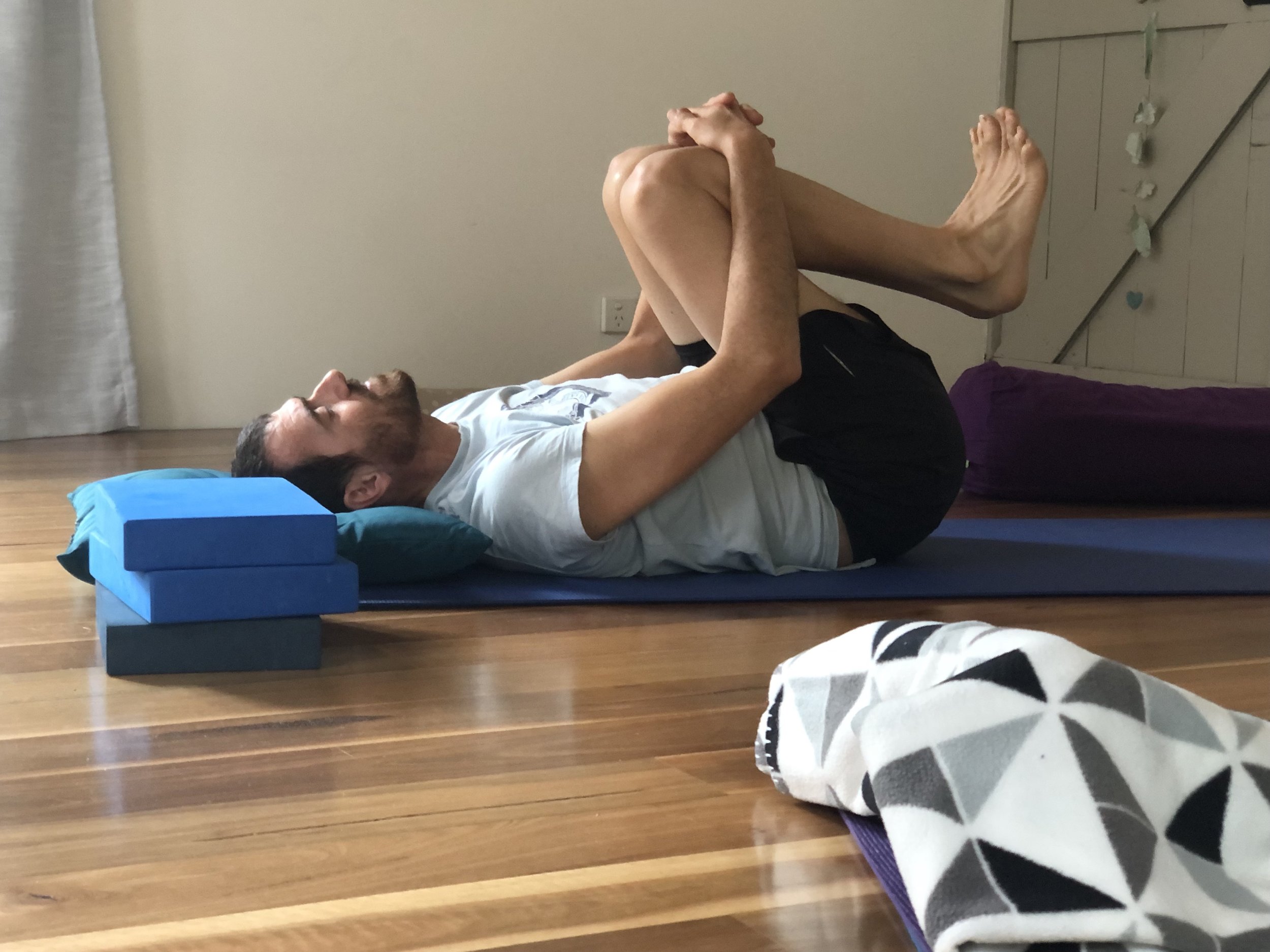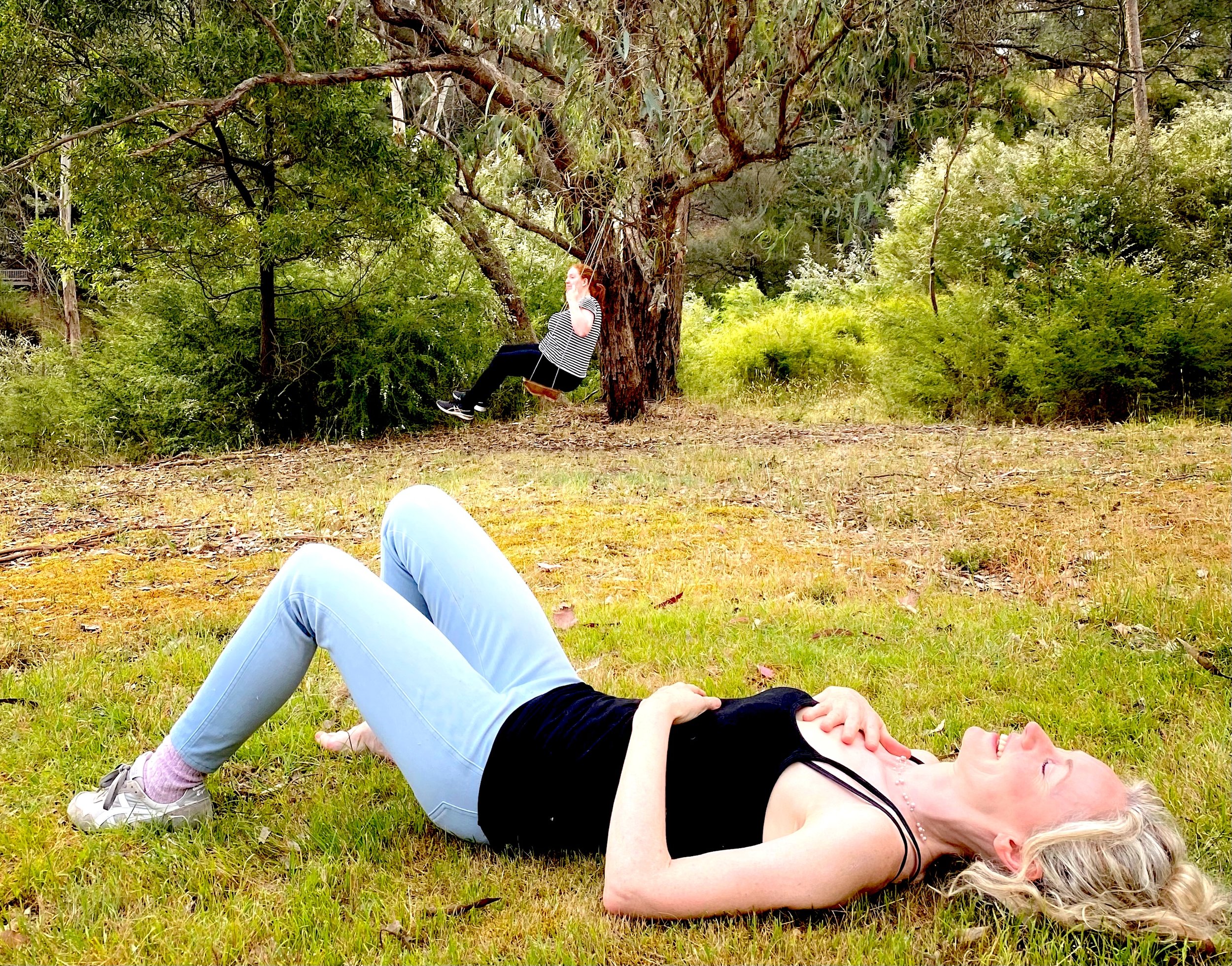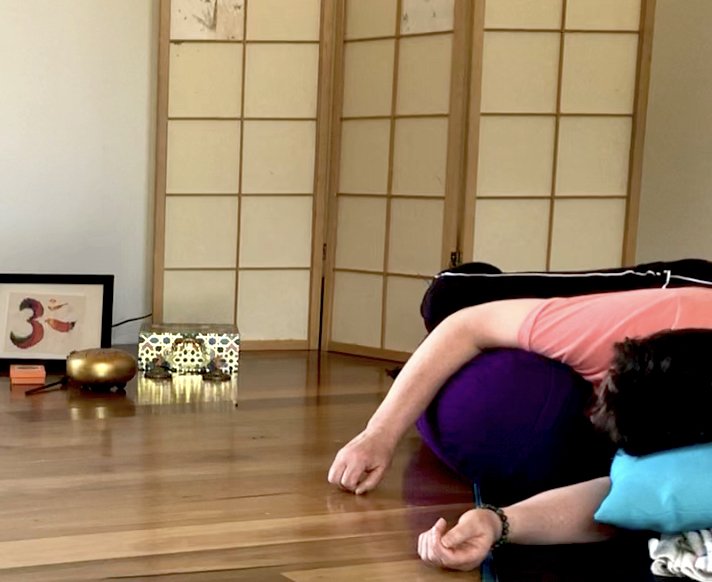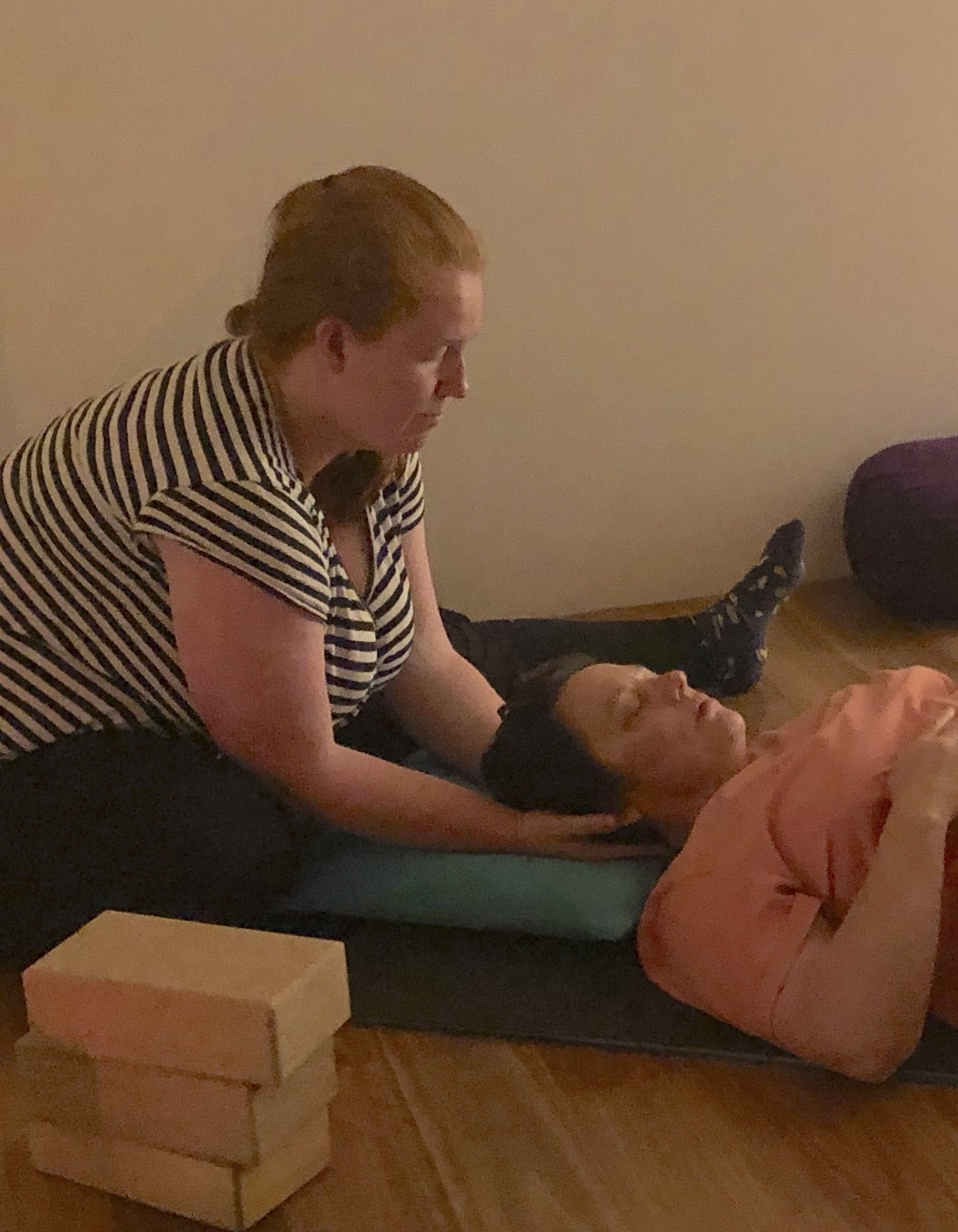The profound and deeply transformative nature of my teaching does not spring from me alone and it does not spring from my classical yoga training alone. Something came along - yes indeed, like a large Flower Truck! - and knocked my limited ideas of yoga right off their feet. I have thankfully landed in a bed of botanicals called Scaravelli yoga.
My teaching are not a direct representation of Vanda Scaravelli’s work and the ongoing work of her students, but her influence has had the most impact on how I both move my body and how I phrase the experience of yoga.
One can easily set a Scaravelli workshop’s learnings aside and continue along the pre-made path of acceptable and normal yoga teaching. I say ‘easily’ because the Scaravelli teachings can be elusive and not at all instructional. Teachers in training spend most the sessions looking quizzical and in deep confounded thought.
Instead of giving up, I grappled with the impact this Flower Truck had on me. I let it turn me around and flip me upside down. The result was… I felt broken and useless as a teacher. I cried, I asked questions and I trusted in my body and my breath and the spirit of Louise Simons, Diane Long, Caroline Hutton and others.
When one has a spiritual connection it is self evident. In the presence of these Scaravelli teachers their light allows me to see and feel and truly live my light. The experience was not so much one of adding to my knowledge, it was one of taking away the coverings.
Although shame and self doubt will crowd in, as it always does, I chose to fight and to protect what I learnt. I chose to keep it alive within me and be fearless on that path.
Every single day I have honoured these women and their teachings. And I have trusted my students to be ready to engage in this uniquely genuine interaction.
I have transformed my pashimotonasana, my bujangasana, my tadasana, my uttanasana, my adho mukha svasasana, my chakrasana. All are forever transformed.
They are so changed that I would look a fool turning up to a regular yoga class and teaching them.
What do I say to those who follow my instructions and see how I formulate these poses? Am I to be guided to the edge by my Scaravelli teachers and then be abandoned there when I chose to take flight?
Of course not. I say “This is what I have taken away from working with Louise and Diane and Caroline and Rossella.” And to say that more succinctly, I say “I am Scaravelli inspired”
To say anything less would be untrue.
And besides formal poses… my relationship to body and breath has been liberated. My relationship to self and to other has become more natural, playful and sacred.
I have risen up and I now ride the wave that these women gave momentum to and which now swells up inside me.
I took action, quit all of my teaching, made a yoga studio at home, unleashed my intuitive flow and learnt the lessons my heart and soul were yearning for me to hear.
Every single day I am Scaravelli inspired. Not just in formal yoga poses but when I wash dishes, when I drive my car, when I speak to people. Each moment that I decide to enter my spine, to sit on it a little longer, to converse with, listen to and transform it, means to be in a Scaravellian moment. I am thankful to and influenced by Scravelli in my most personal and intimate of places.
Each time I relax my knees and open the bottom of my spine. Each time I am not even sure anymore of what I am sitting on because there is so much gathering and releasing happening in my hips, so dynamically, that I feel more like helium than a solid object. And each time my consciousness penetrates this flesh and reimagines it anew, I am Scaravelli inspired.
Much of the ground-work I had laid years before even meeting Diane. So there was a preparedness inside me. I was not in any way starting from scratch or needing hand holding.
From my early 20’s I identified the rigidness of Iyengar yoga was not a healthy path for my gentle soul. I chose a Chi Gung teacher and then a Tai Chi teacher. Only returning to yoga when I understood softness, a quieting inner humbleness and deep surrender.
This protected me.
For example, in an ashtanga class which my Yoga Teacher Training provided for us, I met face to face my physical prowess and the egoic drive it could unleash. I chose ‘No’. The feats of my muscular skeletal body were not to be a path I would follow just because I was naturally good at it. I walked away even though it stoked the flames of my ego. In that split-second I made a decision to walk a path of internal alchemy. The glossy allure of success through dominance or the appearance of “excellence” would end up being empty. I felt that, and it was my truth.
I actually remember this particular Asthanga School’s principal teacher pushing students bodies into poses like they were pieces of meat. It was rough and directional, as though the human person was secondary to the position aimed for. That was a big give away. *
Other ways of preparedness include always chosing teachers who are relaxed and friendly and have zero power play going on. I feel so blessed by this. I have somatics, I have Rolfing, Feldenkrais, Alexander technique, Mary Bond, Aikido, Jiu Jitsu, Vocal Training. All are arts that inform my yoga and align with Scaravelli in potent ways.
My students who showed up were all genuine in their search and requiring the soothing Langhana approach which I preferred over the strengthening Brahmana practices. So I kept nurturing and sharing deeply genuine approaches to yoga because of the beautiful souls trusting my teaching. It was never about poses. It was always about energy, relationship and consciousness.
In pranayama, I always preferred the subtleness of full yogic breath, Dirga Swasam, over any formalised or forceful breaths. I didn’t judge this preference as lazy or undisciplined. I watched with open mindedness and trusted in the natural tides of my own body and emotions. I now feel a profound intimacy in relation to my breath that rarely leaves me, the friendship is so beautifully bonded.
I only really do nadi shodhana as a Chandra Bhedana when in bed and the right side of my face happens to be squashed against the pillow. Natural and divine! Whole body affected by the slightness, the subtleness of spirit riding on the breath. I don’t ‘do’ the pose, I notice what is happening in the current shape my body has already taken. And I look for the intelligence there.
Yes, I feel my breath is bigger than me. Rossella gave me that.
Yes I feel my arm does not end at the glenoid fossa. Louise gave me that.
Yes, we can spiral up and back down through limbs to spine. Caroline gave me that.
Yes, my legs continue up as high as my solar plexus in a backbend. I learnt that from Paddy McGrath.
Ultimately, we are all drawing from the same source and seeing the rejuvenation it gives, in which ever form that happens to take. As Joseph Campbell says, the source is the same, it just takes different forms.
I drink from the scaravelli well.
I have no doubt about that.
If you want to join me and share and take a drink together that would be even more lovely.
It was common for a guru to teach a student one pose. The student then goes home, explores the learning for a year to then return and learn the next step. I feel this path suits me well. As I said, I was fertile soil and my philosophical approach and natural tendencies have always been deeply aligned with each of the Scaravelli teachers I have come across.
For me I would like Scaravelli sessions (and most non beginner yoga sessions) to be about exploration and questions and principles. For the teacher to observe more than instruct. Observe a student’s natural intuitive flow, prompt them with questions they could ask themself and ask the moment/universe, begin investigations from where they are, and only making inroads into what is already there.
If I were to contribute more to the path of Scaravelli, that would be my contribution and I feel it fits beautifully because it trusts what is already there. A teacher should observe more, assume the student is complete and simply ask questions the student might want to ask themselves. In this way a new branch of the tree of Scaravelli could grow. Different to the other branches, but in balance and harmony with them and sharing the same source.
Everything is there for a reason and shining a light on it is the nature of yoga.
And when one holds a torch we must know about letting things sit in the dark a little longer too, and honour the sacredness of those spaces that are not open to the mind’s interfering ways. Leave it in the dark. That is also the kindness and wisdom of yoga. The viveka within me, I trust.
An example of this is when my body does not let me enter into what I think might be a Scaravelli practice. I lie on my back and try to relax everything and go into the secret places of the spine, but my gut and my heart and my head all say “No way girl! Not here, not now.” And so I let the subtle things remain in the dark and move as the body asks. An energetic sun salute is no less yoga because it uses straight lines and prescribed directions. It is yoga because in that moment it is true and results in and come from Union.
For some that happens in the Iyengar lineage, for other Satchinanda or Asthanga. And for me, all are one. All are the same when we listen deeply and open up to the fullest possibility.
The close and constant teaching I so long for and desire is something I simply always assume will happen. I am not forcing it. In my mind, there is a fuzzy beacon shining in the distance, leading me to it, and so I foresee many trips overseas with Scaravelli teachers. For now that is not my reality and I am content to wait and let life surprise me.
~
A few more moments of Scaravelli Yoga alive in my life:
Louise’s “thighs that would climb a tree” keeps resonating in so many ways. The sole of the foot to pelvic floor connection through to spine has had a myriad of spin offs for me in many poses. It evokes incredible emotion and wholeness like an animal would feel – immediate, embodied, ready.
Diane’s step with forefoot first not heel. Something so patently incorrect I took away with me and made it make sense.
Louise’s shopping at the fruit stalls – we can see the health, we can see the life flow and wellbeing the same way we choose one fruit over another. It is tangible in an enigmatic way.
Caroline’s shoulder stand without pushing anything to get up. No push, no momentum. Just gathering, gathering and releasing, gathering and releasing to create lightness.
I know what it is like to leave the mind behind and let the body reveal its directions and desires freely. I put the mind aside and I listen and I follow reverently and in awe that I get to experience such a sacred moment.
Louise’s deep back of the shoulder. Transformed everything. It is present for me when I open a draw or lean down to do my laces. All transformed by this incredibly beautiful discovery. And still the shoulder “is as big as the sun”
And a thousand and one more that I could name and demonstate.
That is my Scaravelli share for now.
P.S. Here are some of those thousand and one moments that came to mind just this morning:
~ The back of the head reaching back, elongated upward like ‘Alien’ and it being the first spinal curve even before the neck (which precedes the lumbar etc…)
~ My head on top of the spine springs like a flower, blossoming
~ The body’s two halves - earth below and sky above, wanting to meet and interwine, and share a bit of each other so that the solid bits become light and the light bits know something of substance.
~ Relax the (fucking) jaw, mouth and tongue.
~ A foot that steps like the central actor in the limelight of a stage. Steps forward in all its glory!
~ Stand on your knees
~ The thigh join is not a hinge
~ Round Round Round - the roundness has no front or back. Go round round round
~ Move the opposite way to where you think you are going.
~ Let the weight of the head rest the thoracic spine. Ahhhhhh!
~ Let spine have short bits followed by long, followed by short followed by long. Shorten, lengthen, shorten, lengthen all the way up.
~ The spine splits at the lumbar. (So does the breath but the breath is whole)
~ Feet opening bottle tops.
~ Feet that could float you on water.
~ “Do you wanna come play?” feet
~ Standing is not a static position.
Do you still want more? I could go on :-)
~ Trikonasana legs wide wide like on a fat horse, but in, in holding on even as they widen out. Oh la las my inner thighs and pf love that one! Dynamic and Juicy!
~ Trust the middle of your back.
~ The openness slides through the door of the pelvis like a cat flap just missing the cat’s tail
~ Your shoulder is between your elbow and your knee
~ Wrap the goodness into the belly like making Katupa, keep those gems in there are you go up into full chakrasana
~ Warrior One with thighs and pelvis alive and responsive as they would be when riding a horse and feeling each movement and breath made below.
~ Twisting by going internally in the opposite directions. Dynamically avoid the twist you are doing. Just like in singing where you want to avoid getting to the note and keep the previous note still resonating and ringing out as you meet the next note. Hold back, hold on, hold in but sing!
~ Downdog like a panther, ready to leap into a forward stride
~ When I relax my knees my tummy does a big flip and starts moving in the opposite direction. Like a change from sympathetic to parasympathetic in an instant.
~
References: Thanks for Dr Fox for the Fuzzy Beacon idea and Cecilia Macaulay for sharing it with me.
*Note: I could have been diplomatic and said “a popular style of hatha yoga” instead of risking branding all Asthanga practice in this light. However, I see two things: 1. my reader is smart enough to know not to generalise, but to look and see for themselves. 2. Being coy and playing with euphemisms lacks the spine I hope yoga brings to my writing.












